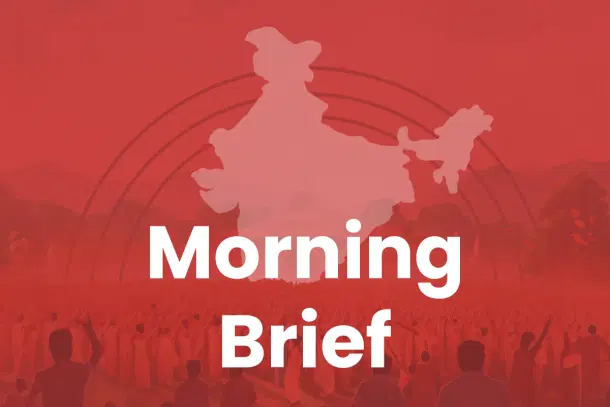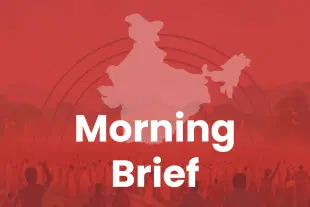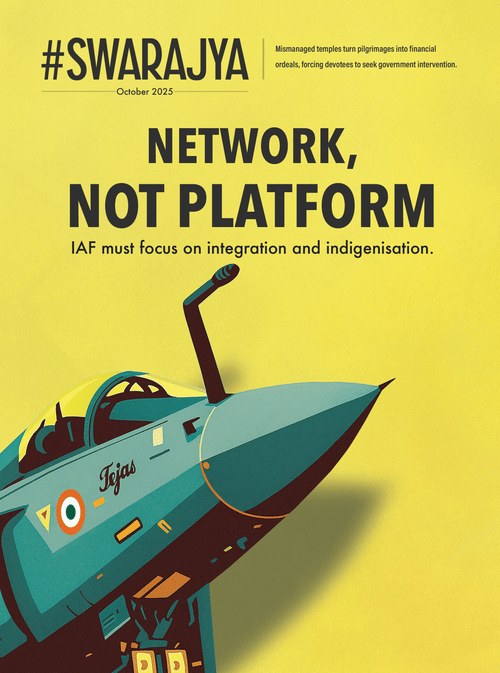News Brief
Legendary Kannada Author SL Bhyrappa Passes Away; GSTAT Launched By FM Sitharaman; Govt Boost For Shipbuilding; And More
Swarajya Staff
Sep 25, 2025, 09:28 AM | Updated 09:52 AM IST
Save & read from anywhere!
Bookmark stories for easy access on any device or the Swarajya app.


Legendary Kannada Novelist SL Bhyrappa Passes Away At 94
Acclaimed Kannada novelist and philosopher Santeshivara Lingannaiah Bhyrappa, popularly known as SL Bhyrappa, passed away at the age of 94 in Bengaluru on Wednesday (24 September) following a cardiac arrest.
Bhyrappa was admitted to Rashtrotthana Hospital, where he suffered cardiac arrest around 2.38 pm, according to a hospital release.
Born on 20 August 1931 in Hassan, Karnataka, Bhyrappa emerged as one of the most influential voices in Indian literature.
His first novel Bheemakaya, published in 1958, marked the beginning of a literary career spanning more than six decades.
He went on to write around 25 novels, many of which were translated into Hindi and several other Indian languages.
For over 25 years, he remained one of the top-selling authors in Kannada.
Paying tribute to Bhyrappa, Prime Minister Narendra Modi wrote on X: “In the passing of Shri S.L. Bhyrappa Ji, we have lost a towering stalwart who stirred our conscience and delved deep into the soul of India. A fearless and timeless thinker, he profoundly enriched Kannada literature with his thought-provoking works. His writings inspired generations to reflect, question and engage more deeply with society. His unwavering passion for our history and culture will continue to inspire minds for years to come. My thoughts are with his family and admirers in this sad hour. Om Shanti.”
Alongside his literary career, Bhyrappa taught philosophy for over three decades, including a tenure at NCERT in Delhi.
His contributions earned him several top honours, the Sahitya Akademi Award in 2015, the Padma Shri in 2016, and the Padma Bhushan in 2023 for his contributions to literature and education.
Government Approves Rs 69,725 Crore Package For Ship Building
The Union Cabinet Wednesday approved a comprehensive Rs 69,725 crore, 10-year revival package to transform India's shipbuilding and maritime sector. Railways Minister Ashwini Vaishnaw called shipbuilding the "mother of heavy engineering," emphasizing India's historical maritime excellence until the 18th century.
The four-pillar approach includes: a Rs 24,736 crore Shipbuilding Financial Assistance Scheme; a Rs 25,000 crore Maritime Development Fund for cheaper financing; a Rs 19,989 crore Shipbuilding Development Scheme supporting new clusters; and legal reforms updating key maritime laws.
Expected outcomes, as per the government, include 30 lakh new jobs, Rs 4.5 lakh crore investments, and enhanced capacity to 4.5 million gross tonnage.
Finance Minister Nirmala Sitharaman Launches GST Appellate Tribunal
Union Finance Minister Nirmala Sitharaman Wednesday launched the GST Appellate Tribunal (GSTAT).
The GSTAT, established as the appellate authority for GST-related appeals, had faced delays since benches were notified in 2019 due to legal hurdles. The GST Council in September decided to make it operational before month-end, with hearings beginning by December.
Sitharaman emphasized the tribunal would end interpretational differences between states that previously complicated business operations, especially for MSMEs. "We open a new era of predictable, specialised jurisprudence," she stated, highlighting the single, independent forum for appeals from both Centre and state orders.
GSTAT President Sanjaya Kumar Mishra noted it would become India's largest tribunal with 116 members, 32 benches, 45 locations, and over 4 lakh pending cases from inception. Approximately 90% of cases will be single-bench matters involving under ₹50 lakh tax burden.
Other developments
Ladakh: Government Calls Out Sonam Wangchuk For Instigating Mob
Clashes broke out in Leh on Wednesday after activist Sonam Wangchuk's hunger strike for Ladakh's statehood and Sixth Schedule status led to violent protests, injuring over 30 police and CRPF personnel.
The Home Ministry, in a press release, stated that a mob, allegedly instigated by Wangchuk's "provocative speeches" referencing Arab Spring-style protests, attacked government offices including the Chief Executive Councillor's office, setting them ablaze and torching police vehicles. Police resorted to firing in self-defense, resulting in casualties.
Wangchuk began his hunger strike on September 10, despite ongoing government dialogue through a High-Powered Committee. The ministry highlighted significant progress made, including increasing Scheduled Tribe reservations from 45 per cent to 84 per cent, providing one-third women's reservation in councils, declaring Bhoti and Purgi as official languages, and commencing recruitment for 1,800 posts.
The ministry noted that Wangchuk broke his fast and left for his village during the violence without attempting to control the mob.
The next High-Powered Committee meeting is scheduled for October 6.
RBI Projects Optimistic Growth Outlook Amid GST Reforms
The Reserve Bank of India's September bulletin released Wednesday expressed confidence in India's economic prospects for the second half of FY26, citing landmark GST reforms as a key catalyst for sustained consumption growth.
The central bank highlighted the economy's "marked resilience" despite global uncertainties from US trade tariffs and fiscal stress in advanced economies.
India recorded a five-quarter high growth of 7.8 per cent in Q1 FY26, significantly exceeding RBI's 6.5 per cent projection.
The bulletin praised September's GST overhaul, which simplified the tax structure from four slabs to primarily two rates. These reforms are expected to deliver "sustained positive impact through significant gains in ease of doing business, lower retail prices and strengthening of consumption growth drivers," said the central bank's bulletin.
Beyond rate simplification, the bulletin noted that the reforms addressed inverted duty structures and streamlined compliance processes. Combined with 100 basis points of repo rate cuts since February, income tax relief, and employment measures, these changes are positioned to create "a virtuous cycle of higher investment and growth."
High-frequency indicators showed manufacturing and services activity at decadal highs in August. Foreign direct investment inflows reached a 38-month high of $5 billion in July, with net FDI totaling $10.75 billion during April-July versus $3.5 billion in the previous year.
The current account deficit moderated in Q1, supported by strong services exports and robust remittance inflows, while CPI inflation remained below target for seven consecutive months despite a marginal uptick, noted RBI.
Cabinet Approves Rs 2,277 Crore Science Research Scheme
The Union Cabinet Wednesday approved a Rs 2,277.40 crore DSIR/CSIR scheme for capacity building and human resource development in science and technology for 2021-26.
Implemented by CSIR, the initiative will cover all R&D institutions, national laboratories, and universities nationwide.
The scheme consolidates four sub-programmes: doctoral and postdoctoral fellowships; extramural research and emeritus scientist schemes; excellence recognition awards; and knowledge-sharing grants.
The initiative builds on recent achievements including India's rise to 39th position in the Global Innovation Index and ranking among top three countries in scientific publications.
The government emphasized this milestone in CSIR's 84-year history will strengthen India's innovation-driven R&D ecosystem.
India Successfully Tests Rail-Launched Agni-Prime Missile
This morning, 25 September, India conducted its first successful test of the intermediate-range Agni-Prime missile from a specially designed rail-based mobile launcher.
Defence Minister Rajnath Singh hailed the "first-of-its-kind launch," emphasizing the system's ability to move across the railway network without preconditions, enabling cross-country mobility and rapid deployment with reduced visibility.
The test places India among select nations with canisterized rail-launch capabilities. The next-generation Agni-Prime can strike targets up to 2,000 kilometers away.
DRDO, Strategic Forces Command, and Armed Forces collaborated on the successful mission, following August's Chandipur test and March's Agni-5 MIRV trial under Mission Divyastra.





